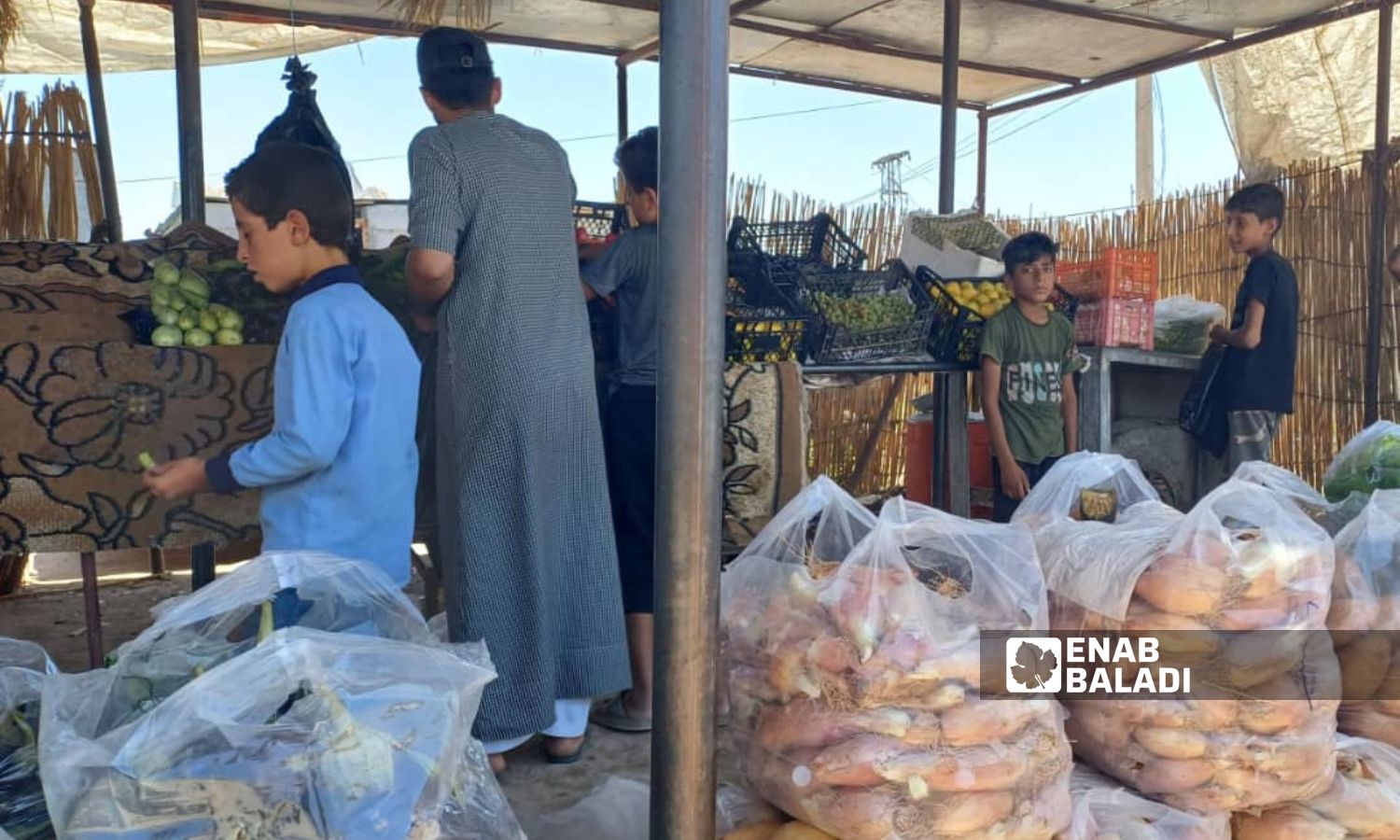



Deir Ezzor – Obadah al-Sheikh
Farmers in Deir Ezzor incurred financial losses in the onion season, as they hoped it would compensate them for their losses from the wheat and cotton seasons.
Interest in onion crops is new to the region, as the farming areas have increased with hopes of farmers making a profit.
The onion planting season starts in January and February, and it requires great care and attention to achieve a bountiful production, while the harvest season begins in July and ends in mid-August.
Farmers in the eastern and western countryside of Deir Ezzor, whom Enab Baladi met, spoke about the losses they incurred after harvesting this season’s onion crop.
Hammoud al-Naif, a farmer from the village of Hawija Boumsa’a in western Deir Ezzor, said he chose to plant onions because it is relatively easier than growing vegetables, although it requires high effort and labor.
He told Enab Baladi that he used to cultivate a small area for household consumption, then chose onions as an alternative to wheat farming after the losses of the 2023 season, but it turned out that the choice was not right.
The farmer suffered a loss estimated at $4,000 (61.5 million Syrian pounds) after harvesting his 22-dunum land.
It was expected that one dunum would produce between 4 and 6 tons of onions, but at harvest, it produced only one and a half tons, which were sold at low prices due to the abundance of onions in the markets and the lack of places outside Deir Ezzor to export them.
Khalil al-Halis, another farmer from the village of Barsham north of Deir Ezzor, said he decided to plant an area estimated at 15 dunums of onions after financial losses due to the weak production of wheat and cotton seasons in 2023.
Al-Halis added to Enab Baladi that the production at onion harvest was weak for several reasons, the most important of which are weather factors such as cold waves and frost that hit the region, in addition to the heat waves that Deir Ezzor countryside has experienced since last May.
The farmer estimated his losses at about $2,500 (38.5 million Syrian pounds), including labor and machinery costs.
He mentioned that the decrease in the price of onions was a reason, as the price per kilo last February was 7,500 pounds, while today it ranges between 2,500 and 3,500 Syrian pounds, depending on quality.
Importing agricultural products from outside the Deir Ezzor countryside is a major concern for the region’s farmers, who grow many types of vegetables alongside the two main crops, wheat and cotton.
Jassem al-Khalaf, a vegetable trader in the market of Thiban town in eastern Deir Ezzor, told Enab Baladi that farmers sell their crops locally due to the small production quantities, which do not allow for export.
He added that the closure of the crossings that connect the areas controlled by the Syrian Democratic Forces (SDF) with the regime-controlled areas in Deir Ezzor plays a major role in the weakness of the local market.
Agriculture, along with livestock breeding, is considered one of the main professions in the Deir Ezzor countryside, and it is a source of livelihood for many families in the region.
The agricultural sector in Deir Ezzor suffers from many problems, such as heat waves in the summer and frost in the winter. The wheat season this year also witnessed the spread of insects that damaged crops in some areas.
Deir Ezzor is divided into two parts, the eastern part controlled by the Autonomous Administration of North and East Syria (AANES) and its arm, the SDF, and the western part under the control of the Syrian regime.
if you think the article contain wrong information or you have additional details Send Correction